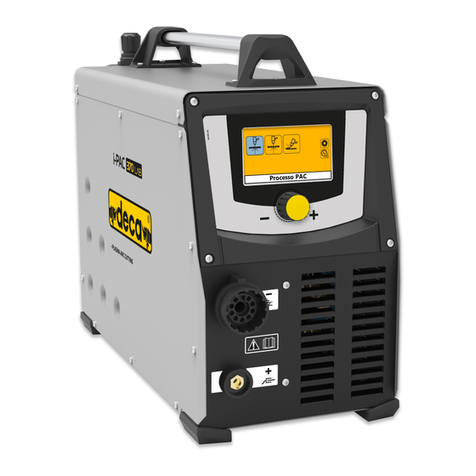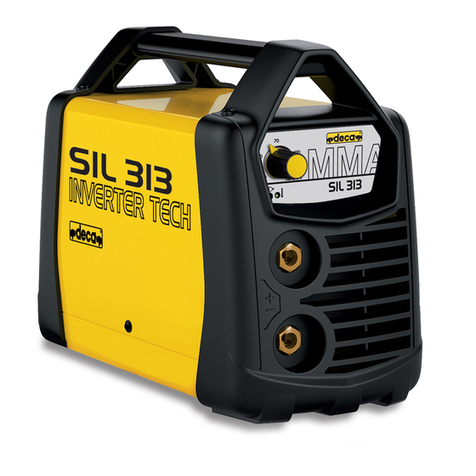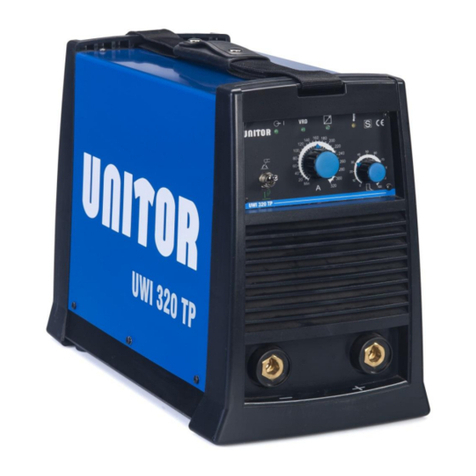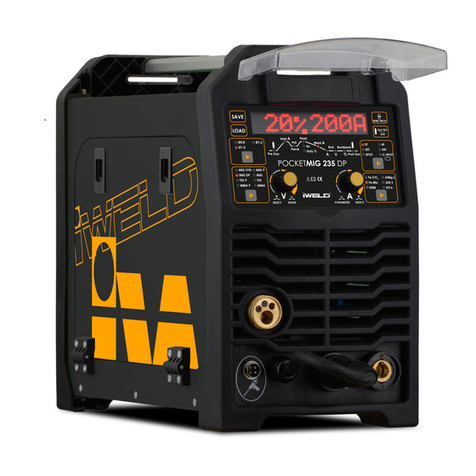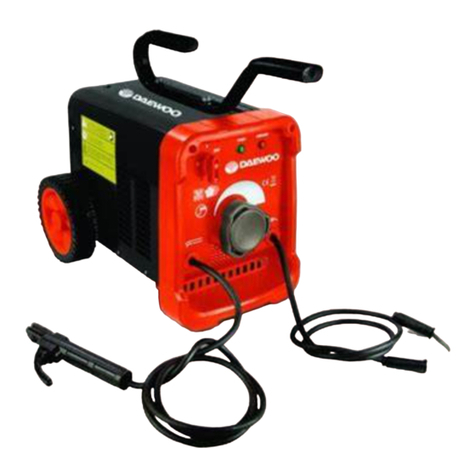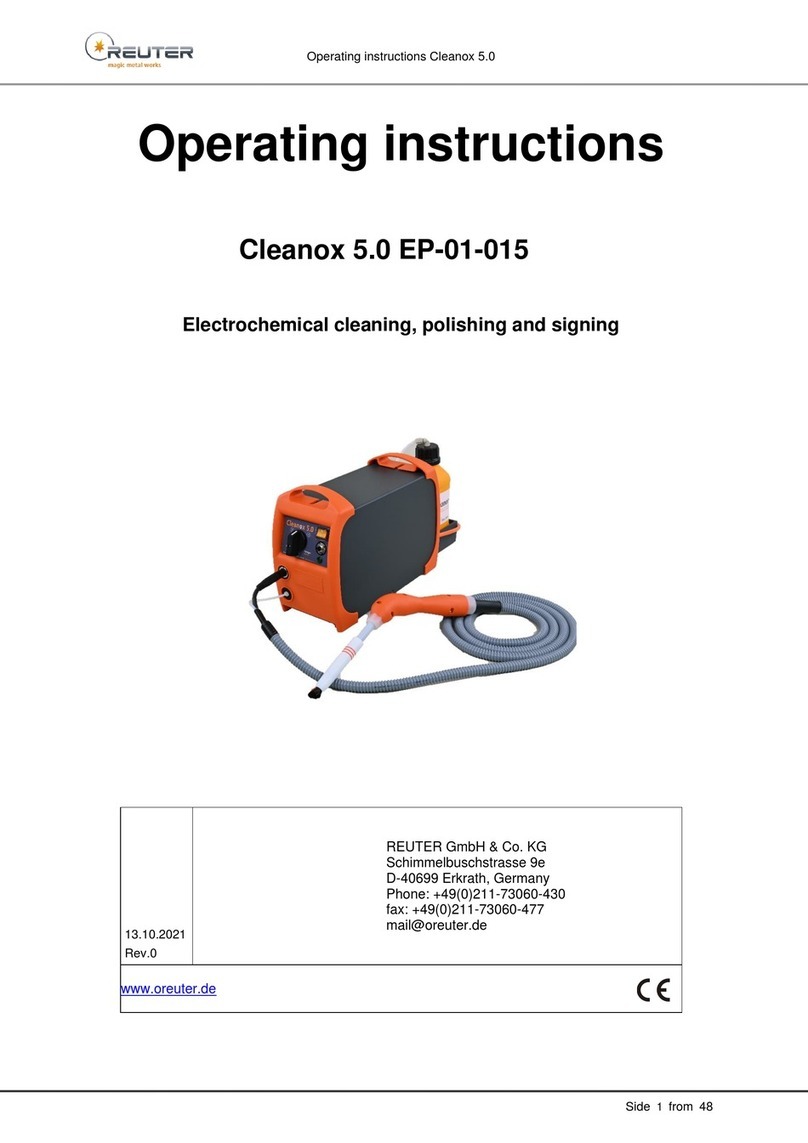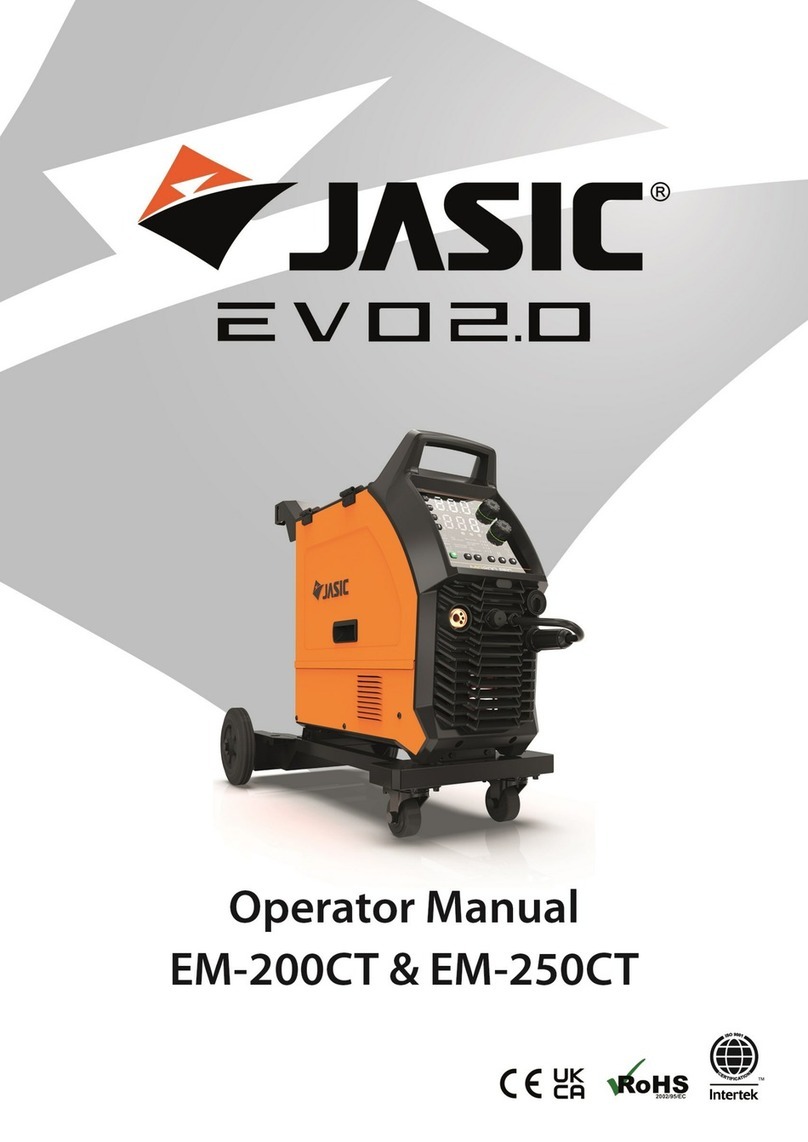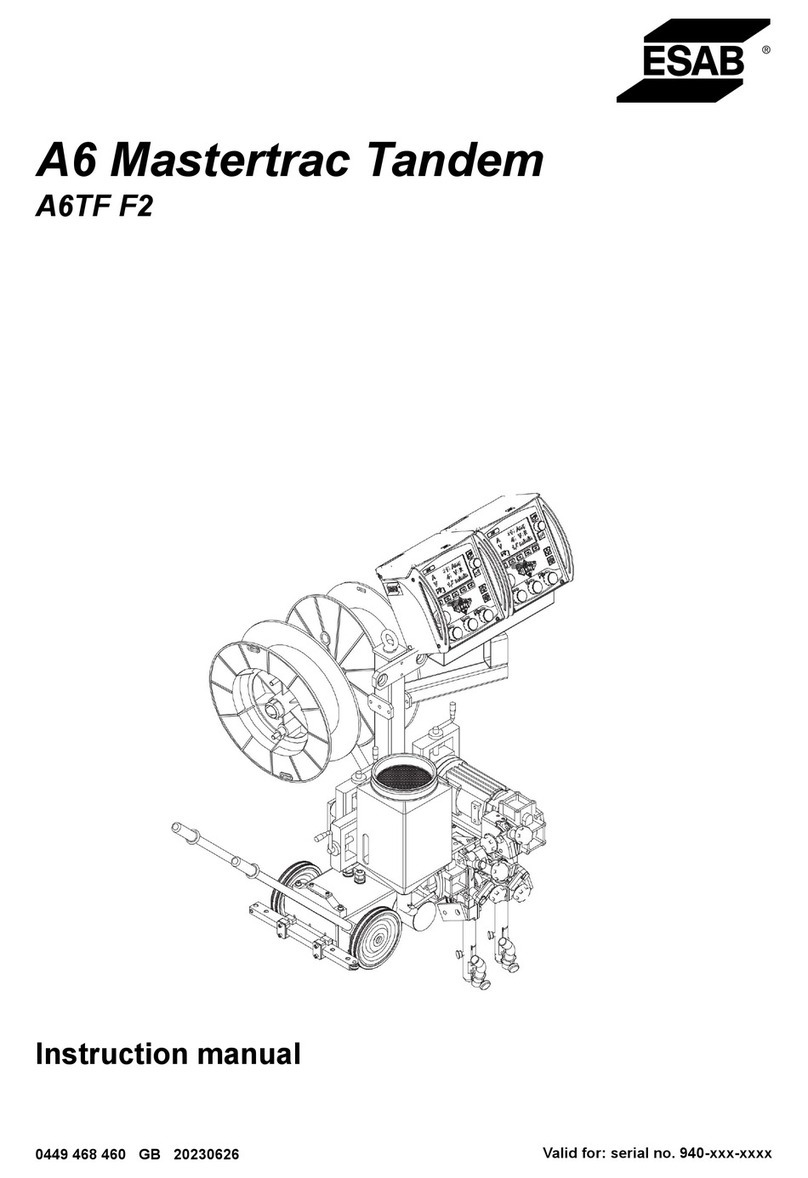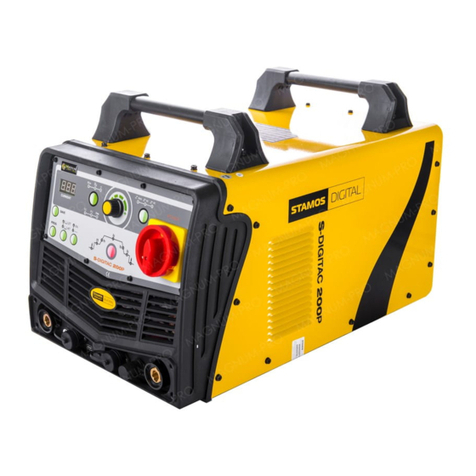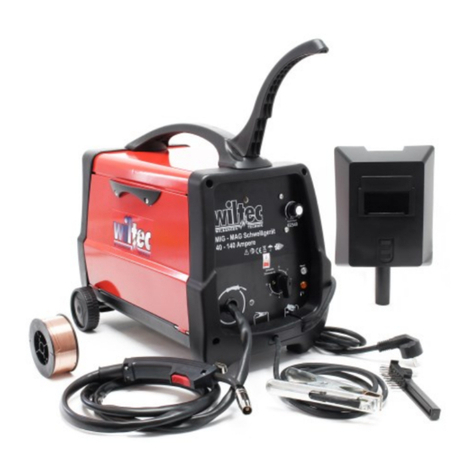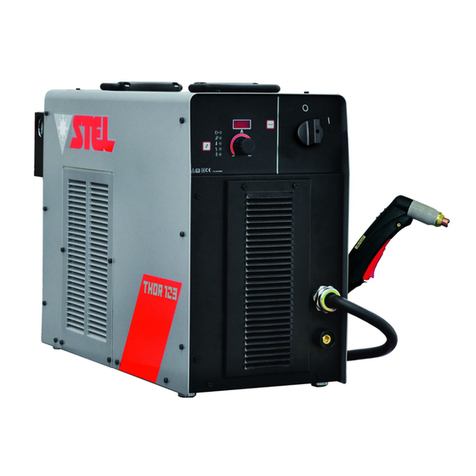Deca MIG Series User manual

1
950686-00 22/09/18
EN Instruction manual

1
950686-00 22/09/18
I1max= x,xA
xx% xxx%
EN 60 974/1
U1= xxxV
Xxx%
IP 21
S
TYPE: xxxxxxxxxxxxxxx
I
2
xxxA xxxA xxA
U
2
xx x,V xx,xV xx,xV
xx A/xxV-xxx A/xxV(max xxxA/xxV)
x~xx/xxHz
I1eff= x,xA
UV
0
Xx,x-xx,x
Xxxxxxxxxxxxxx
SN:xxxxxxxxxxxxxxx
T2
T2
Fig.5
Fig.3
220 V 230 V 240 V
380 V 400 V 415 V
A
B
I
J
C
D
E
H
F
G
Fig.2
K
Kg LM
Fig.1
Fig.4
I
max
(A)
2
190
240V
230V
220V
16A”C”
415V
16A
mm
16
2
Steel-Fe
IMax
(A)
2
0,8-1,0
Inox-Ss
180
-
220
0,8-1,0
Aluminium
Al
Ar/He/Co2
Ar/O2
Ar/Co2
Ar/Co2
Co2
Ar
Ø mm.
0,6-0,8-1,0
x
400V
CT
CT
M2
400V
230V
230V
M2
!
6-2
Kg 5Ø200 Kg 15 Ø 300
6-1
Fig.6
6-4
b
6-7
6-6
a
c
6-3 6-4
6-8
5-10 cm
6-9 6-11
6-10
4,1 4,2 4,3
1
2
F
I
6
3
400V
380V
240V
230V
220V
415V
400V
380V
1,5-18
4,4
SPEED
m/min
m/min
M
L
E
D
B
C
H
A
45
10A”C” 16A
1
Argon/Co
Argon
2Co
2
345
GAS
6-8Lt/min
2
Fig.7
6-5
1
20
2
34
3
48
4
63
56
150
Conventional output current EN /IEC 60974-1:2012
I max (A)
2
190A
7
90 120
d
b
d
a
Fig.9
Fig.10
Steel-Fe0,6-0,8
0,8-1,0
Aluminium -Al
Ø mm.
Ref.
010647
Steel-Fe1,0-1,2 010628
Flux 0,9 010627
010629

2
950686-00 22/09/18
Fig.8
GENERAL DANGER
DANGER OF ELECTRIC SHOCK
DANGER OF WELDING FUMES
DANGER OF ULTRA VIOLET
RADIATION
DANGER OF BURNING
SPLASHES
DANGER OF FIRE
DANGER OF EXPLOSION
DANGER OF CRUSHING
HANDS IN GEARS
DANGER OF NON-IONIZING
RADIATION
(EN) KEY TO DANGER, MANDATORY AND PROHIBITION SIGNS
DANGER OF STRONG MAGNETIC
FIELD
DANGER OF BURNS
PROTECTIVE BREATHING APPARATUS
MUST BE WORN
PROTEPROTECTIVE MASKS MUST BE
WORN
PROTECTIVE GLOVES MUST BE
WORN
PROTECTIVE GOGGLES MUST BE
WORN
PROTECTIVE CLOTHING MUST BE
WORN
ENTRY NOT PERMITTED TO PERSONS
FITTED WITH PACEMAKER
EN
Instruction Manual
Read this instruction manual carefully before using the welding machine.
MIG/MAG continuous wire arc-welding machines, referred to in this manual as “welding
machines”, are designed for industrial and professional use.
Make sure that the welding machine is installed and repaired only by qualied persons or
experts, in compliance with the law and with the accident prevention regulations.
Make sure that the operator is trained in the use and risks connected to the arc-welding
processs and in the necessary measures of protection and emergency procedures.
Detailed information can be found in the “Installation and use of arc-welding equipment”
brochure: IEC or CLC/TS 62081.
Safety warnings
Make sure that the power socket to which the welding machine is connected is protected
by suitable safety devices (fuses or automatic switch) and that it is grounded.
Make sure that the plug and power cable are in good condition.
Before plugging into the power socket, make sure that the welding machine is switched off.
Switch the welding machine off and pull the plug out of the power socket as soon as you
have nished working.
Switch the welding machine off and pull the plug out of the power socket before: connecting
the welding cables, installing the continuous wire, replacing any parts in the torch or wire
feeder, carrying out maintenance operations, or moving it (use the carrying handle on the
welding machine).
Do not touch any electried parts with bare skin or wet clothing. Insulate yourself from the
electrode, the piece to be welded and any grounded accessible metal parts. Use gloves,
footwear and clothing designed for this purpose and dry, non-ammable insulating mats.
Use the welding machine in a dry, ventilated space. Do not expose the welding machine
to rain or direct sunshine.
Use the welding machine only if all panels and guards are in place and mounted correctly.
Do not use the welding machine if it has been dropped or struck, as it may not be safe.
Have it checked by a qualied person or an expert.
Eliminate any welding fumes through appropriate natural ventilation or using a smoke
exhauster. A systematic approach must be used to assess the limits of exposure to welding
fumes, depending on their composition, concentration and the length of exposure.
Do not weld materials that have been cleaned with chloride solvents or that have been
near such substances.
Use a welding mask with adiactinic glass suited for welding. Replace the mask if damaged;
it may let in radiation.
Wear reproof gloves, footwear and clothing to protect the skin from the rays produced by
the welding arc and from sparks. Do not wear greasy garments as a spark could set re to
them. Use protective screens to protect people nearby.
Do not allow bare skin to come into contact with hot metal parts, such as the torch, electrode
holder grippers, electrode stubs, or freshly welded pieces.
Metal-working gives off sparks and splinters. Wear safety goggles with protective side
eye guards.
Welding sparks can trigger res.
Do not weld or cut anywhere near inammable materials, gasses or vapours.
Do not weld or cut containers, cylinders, tanks or piping unless a qualied technician or
expert has checked that it is possible to do so, or has made the appropriate preparations.
Never direct the torch towards yourself, others or metal parts; the continuous wire could
make holes or cause short circuits.
Switch off the welding machine and pull the plug out of the power socket before carrying
out any manual operations on the moving parts of the wire feeder.
EMF Electromagnetic Fields
Welding current creates electromagnetic elds (EMF) near the welding circuits and
the welder. Electromagnetic elds may interfere with medical prostheses such as
pacemakers.
Suitable and sufcient measures should be implemented to protect those operators
having such aids. For instance, they should not be allowed to enter that area where
welding equipment is used. Any operator having such aids should consult their doctor
before coming close to an area where welding equipment is used.
This device meets the specic requirements of the product technical standard and is
intended for professional use in an industrial environment only. Compliance to expected
limits for human exposure to electromagnetic elds at home is not ensured.
Follow these strategies to minimise exposure to electromagnetic elds (EMF):
Do not place your body between the welding cables. Both welding cables should be on
the same side of your body.
Twist both welding cables together and secure them with tape when possible.
Do not wrap the welding cables around your body.
Connect the earth cable to the workpiece as close as possible to the area to be welded.
Do not work with the welder hanging from your body.
Keep your head and trunk as far as possible from the welding circuit. Do not work close to
the welder, or seated or leaning on it. Minimum distance: Fig 9 Da = cm 50; Db = cm.20
Class A equipment
This equipment has been designed to be used in professional and industrial environments.
If this equipment is used in domestic environments and those directly connected to a
low voltage power supply network which supplies buildings used for domestic purposes,
it may be difcult to ensure compliance to electromagnetic compatibility as the result of
conducted or radiated disturbances.
Welding in conditions of risk
If welding needs to be done in conditions of risk (electric discharges, suffocation, the
presence of inammable or explosive materials), make sure that an authorised expert
evaluates the conditions beforehand. Make sure that trained people are present who can
intervene in the event of an emergency. Use the protective equipment described in 5.10;
A.7; A.9 of the IEC or CLC/TS 62081 technical specication.
If you are required to work in a position raised above ground level, always use a safety
platform.
If more than one welding machine has to be used on the same piece, or in any case on
pieces connected electrically, the sum of the no-load voltages on the electrode holders or
on the torches may exceed the safety levels. Make sure that an authorised expert evaluates
the conditions beforehand to see if such risk exists and adopt the protective measures
described in 5.9 of the IEC or CLC/TS 62081 technical specication if required.
Additional warnings
Do not use the welding machine for purposes other than those described, for example to
thaw frozen water pipes.
Place the welding machine on a at stable surface, and make sure that it cannot move. It
must be positioned in such a way as to allow it to be controlled during use but without the
risk of being covered with welding sparks.
Do not lift the welding machine. No lifting devices are tted on the machine.
Do not use cables with damaged insulation or loose connections.
Description of the welding machine
The welding machine is a current generator for continuous wire welding, commonly
known as MIG / MAG, suited to welding carbon or light alloy steels, stainless steel and
aluminium using protective gas.
The electrical characteristic of the transformer is at (constant voltage).

3
950686-00 22/09/18
Main parts Fig. 1
A) Spool compartment access door
B) Spool holder reel
C) Wire feeder
D) Power cable
E) Gas hose connection
F) ON/OFF switch
H) Torch connector
I) Ground cable/inductor connector
L) Protective fuses
M) Voltage change terminal board**
** (This component may not be included on some models).
Technical data
A data plate is afxed to the welding machine. Fig. 2 shows an example of this plate.
A) Constructor name and address
B) European reference standard for the construction and safety of welding equipment
C) Symbol of the welding machine internal structure
D) Symbol of the foreseen welding process
E) Symbol of the continuous current delivered
F) Input power required:
3˜ alternate three-phase voltage, frequency
G) Level of protection from solids and liquids
H) Symbol indicating the possibility to use the welding machine in environments
potentially subject to electric discharges
I) Welding circuit performance
U0V Minimum and maximum open circuit voltage (open welding circuit).
I2, U2 Current and corresponding normalised voltage delivered by the welding
machine.
XDuty cycle. Indicate how long the welding machine can work for and how
long it must rest for in order to cool down. The time is expressed in % on the
basis of a 10 minute cycle (e.g. 60% means 6 min. work and 4 min. rest).
A / V Current adjustment eld and corresponding arc voltage.
J) Power supply data
U1 Input voltage (permitted tolerance: +/- 10%)
I1 eff Effective absorbed current
I1 max Maximum absorbed current
K) Serial number
L) Weight
M) Safety symbols: Refer to Safety Warnings
Technical data for torch and wire feeder Fig.3
Starting up
Connections to the mains must be made by expert or qualied personnel.
Make sure that the welding machine is switched off and the plug is not in the power socket
before carrying out this procedure.
Make sure that the power socket that the welding machine is plugged into is protected by
safety devices (fuses or automatic switch) and grounded.
The device must be connected only to a supply system, with an earthed ‘neutral’ lead.
Assembly and electrical connections
¾Assembly the detached parts found in the packaging Fig. 8.
¾Check that the electrical supply delivers the voltage and frequency corresponding to
the welding machine and that it is tted with an automatic switch suited to the maximum
delivered rated current (I2max) Fig. 4,1.
LThe requirements set out in the IEC/EN61000-3-12 standard do not apply to this
equipment. If this equipment is connected to low voltage power supply network, either
the installer or the user is responsible for checking that this can be done (consult the
distribution system operator if required).
¾Plug. If the welding machine is not tted with a plug, t a normalised plug (3P+T for 3Ph)
of suitable capacity to the power cable Fig.4,2.
¾If the welding machine is designed to operate at two different voltages, select the required
voltage on the terminal board, which is accessed by removing the cover. Fig. 5.
LThe welding machines are set to the highest voltage at the factory.
Preparing the welding circuit
¾Connect the ground lead to the welding machine and to the piece to be welded, as close
as possible to the point to be welded.
¾Connect the torch** to the welding machine socket.
LThe recommended sections (mm2) of the welding cable, based on the maximum delivered
rated current (I2 max), are shown in Fig. 4,3.
Installing the continuous wire
For installation, follow the instructions in Fig. 6.
The material and diameter of the wire must correspond to the wire feeder roller Fig.
6,4,a, the contact tip Fig. 6,7,b and the torch liner. If the measurements do not match,
there may be problems with the smooth running of the wire.
LThe pressure of the wire pressing knob Fig. 6,4,c is important for correct operation. If
the wire slips, there will be problems with the welding; if on the other hand it is too tight,
it may be deformed and will not run smoothly through the torch. It can be adjusted as
follows: screw the wire pressing knob until it starts to draw the wire, then, if the wire is
soft (aluminium, cored wire) turn the screw once more; if the wire is hard (steel, stainless
steel, etc.) turn the screw three more times.
LTo remove the continuous wire easily from the welding machine, cut the wire between the
spool and the wire feeder, keeping it taut, and then tie it to the spool. The open the wire
guider arm and, using a pair of pliers, pull the piece of wire out of the torch.
Installing the protective gas cylinder** and pressure reducer**
Place the protective gas cylinder in an upright position, far away from the welding area.
Use the welding machine support or some other xed part so that there is no risk of it
falling or being damaged.
For installation, follow the instructions in Fig. 7.
Gas Application
Argon All non-ferrous metals (aluminium)
Argon + 1-3%O2Stainless steel
Argon + 20%CO2Low carbon steel
CO2Low carbon steel
LArgon/CO2 is preferable to CO2 as it guarantees better results.
LClose the gas valve on the cylinder and zero-set the pressure reducer once you have
nished work.
** (This component may not be included with some models).
Welding process: description of controls and
signals
Once you have put the welding machine into operation, switch it on, open the protective
gas valve and carry out the adjustments following the order shown in the description of
the controls, Fig. 1.
1) Adjusting the welding current
Select the welding current according to the work to be carried out. Start with a low current
if the metal is thin. Then increase the current until the best position is found.
LDo not adjust the welding current while welding, as the current could damage the switches.
2) Adjusting the wire speed
To start welding, press the trigger on the torch and adjust the continuous wire speed
Fig.4,4 The speed is correct when the noise of the welding arc is regular and constant. If
the speed is too fast, the wire presses against the piece, and if it is too slow the welding
arc stretches and the wire melts in drops. If you cannot nd the correct speed, adjust the
welding current instead.
3) Welding timer
When welding a number of equal, single points, this control can be used to set the length
of each weld. The function is useful for nailing on only one side. When this control is not
required, make sure that the potentiometer /switch is in the OFF position.
4) Burn back
Modies the length of the wire that remains outside the contact tip at the end of the
welding operation. The setting carried out at the factory should be correct.
5) Soft start
Modies the approach speed of the wire to the piece to be welded at the start of welding.
The setting carried out at the factory should be correct.
6) Thermal cutout signal
The warning light switched on means that the thermal protection is running.
If the duty cycle “X” shown on the data plate is exceeded, a thermal cutout stops
the machine before any damage is caused. Wait for operation to be resumed and, if
possible, wait a few minutes more.
If the thermal cutout continues to cut in, the welding machine is being pushed beyond its
normal performance levels.
Recommendations for use
Only use an extension lead when absolutely necessary and providing it has an equal or
larger section to the power cable and is tted with a grounding conductor.
Do not block the welder air intakes. Do not store the welder in containers or on shelving
that does not guarantee suitable ventilation.
Do not use the welder in any environment in the presence of gas, vapours, conductive
powders (e.g. iron shavings), brackish air, caustic fumes or other agents that could damage
the metal parts and electrical insulation.
LThe electric parts of the welder have been treated with protective resins. When used for
the rst time, smoke may be noticed; this is caused by the resin drying out completely.
The smoke should only last for a few minutes.
Maintenance
Switch off the welder and remove the plug from the power socket before carrying out any
maintenance operations.
Ordinary maintenance to be carried out periodically by the operator depending on use.
• Check the gas hose, torch cable and ground cable connections. • Clean the contact
tip and the gas diffuser with an iron brush. Replace if worn. • Clean the outside of the
welder with a damp cloth.
Every time the wire spool is replaced:
• Check the alignment, cleanliness and state of wear of the wire roll Fig.10. • Remove
any metal powder deposited on the wire feeder mechanism. • Clean the wire guide liner
with anhydrous solvent and grease remover and dry with compressed air. • Check the
condition of the warning labels. • Replace any worn parts.
Extraordinary maintenance to be carried out by expert staff or qualied electrical
mechanics periodically depending on use. (Apply the rule EN 60974-4).
• Inspect the inside of the welder and remove any dust deposited on the electrical parts
(using compressed air) and the electronic cards (using a very soft brush and appropriate
cleaning products). • Check that the electrical connections are tight and that the insulation
on the wiring is not damaged.
Other Deca Welding System manuals
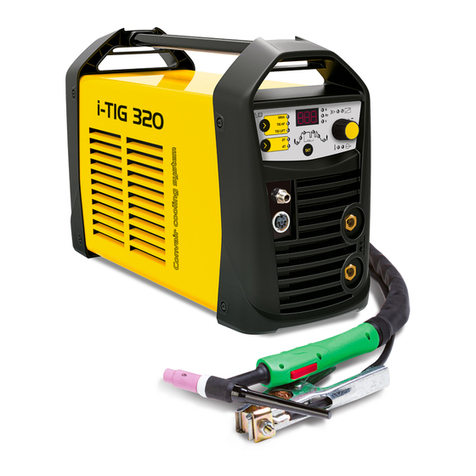
Deca
Deca i-TIG 320 LAB User manual
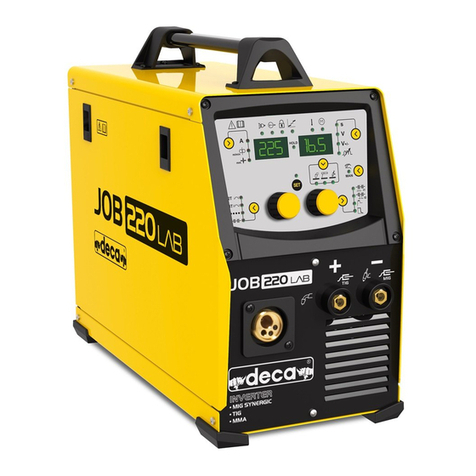
Deca
Deca JOB 220 LAB User manual
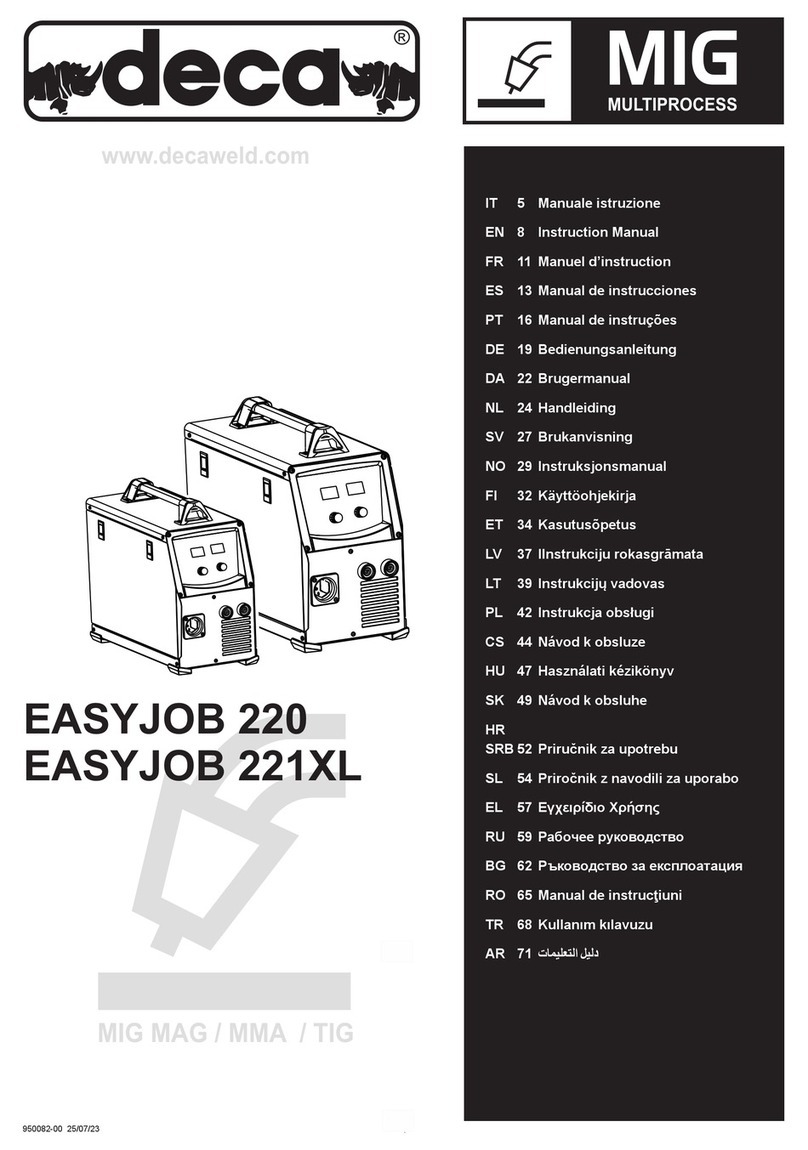
Deca
Deca EASYJOB 220 User manual
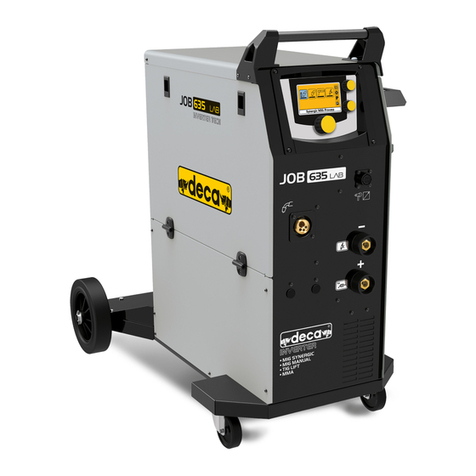
Deca
Deca MIG JOB 635 LAB User manual
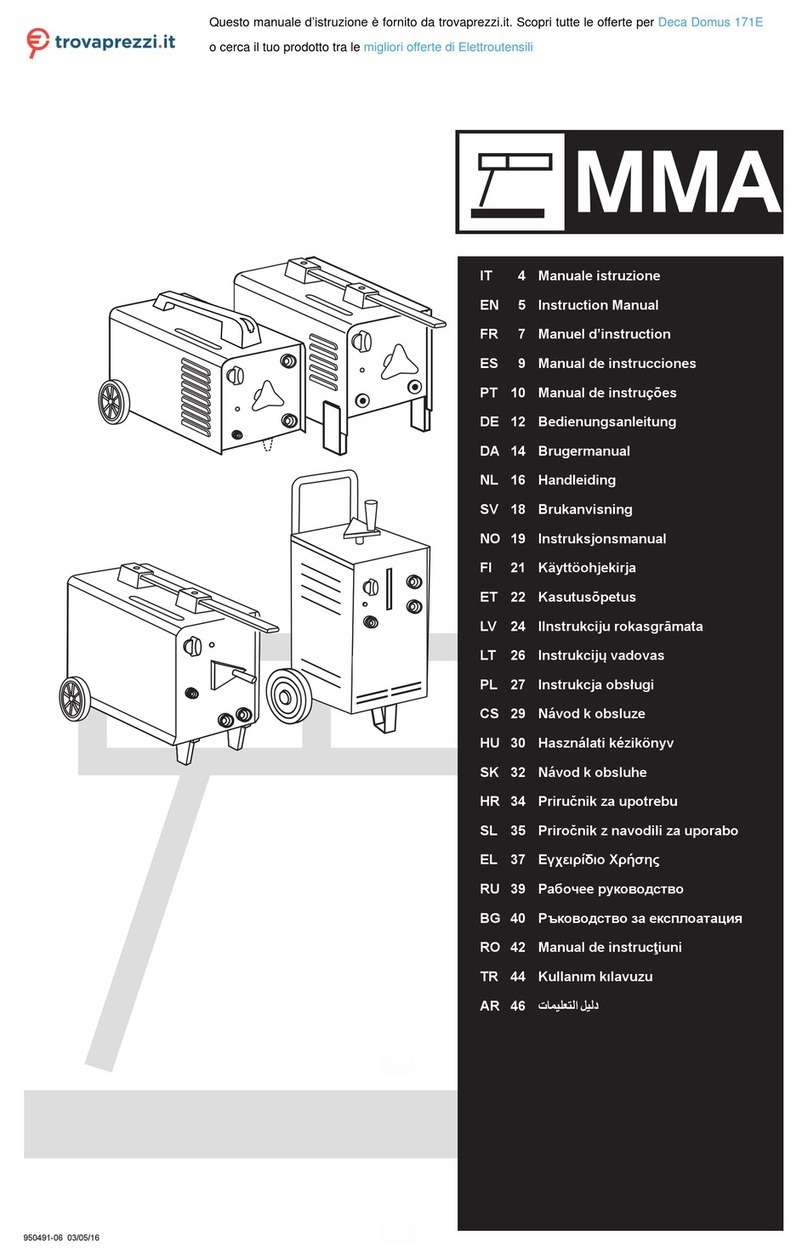
Deca
Deca Domus 171E User manual
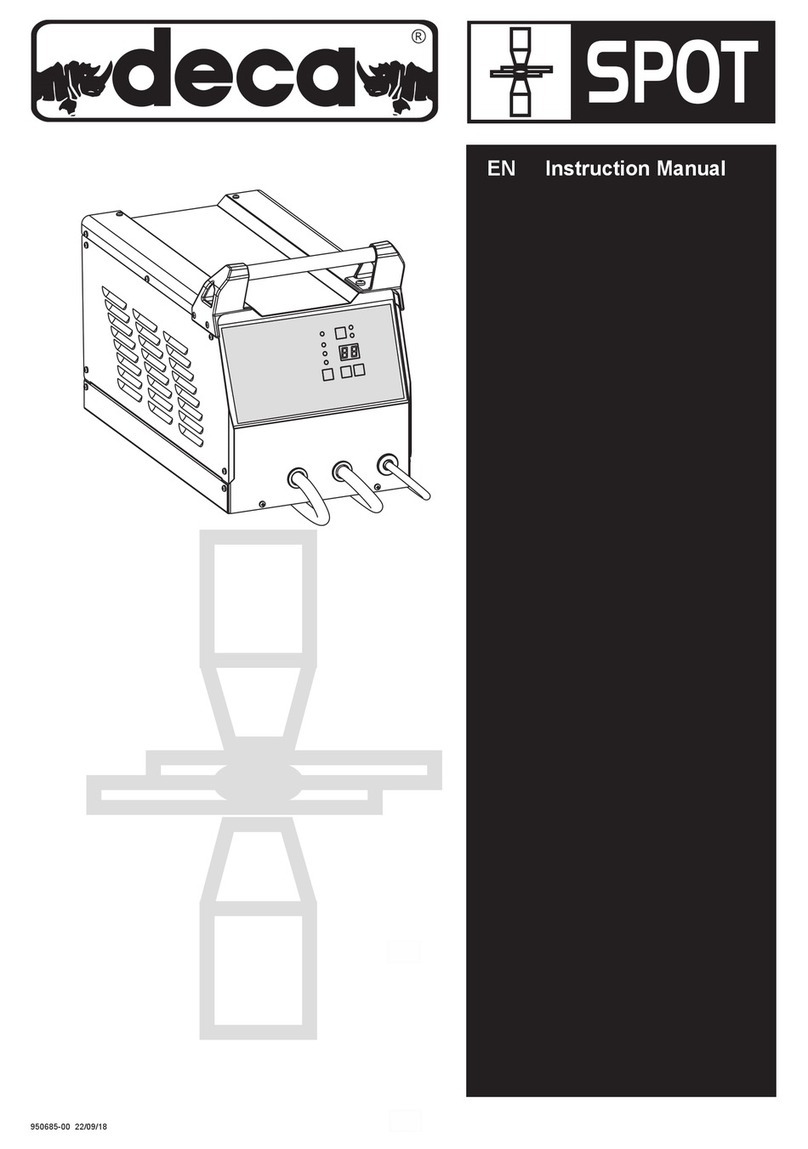
Deca
Deca SW 28 User manual

Deca
Deca JOB 220 LAB User manual

Deca
Deca D-MIG500 User manual
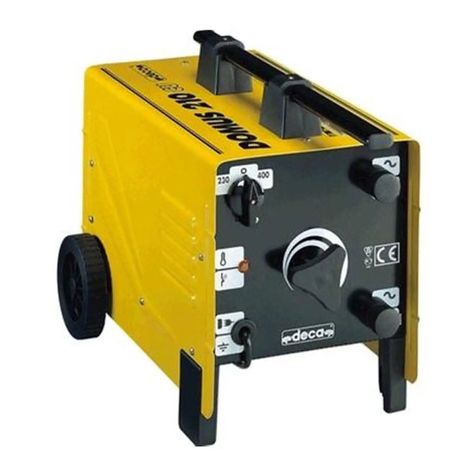
Deca
Deca MMA T-ARC 529 User manual

Deca
Deca MIGA 320 User manual
Popular Welding System manuals by other brands
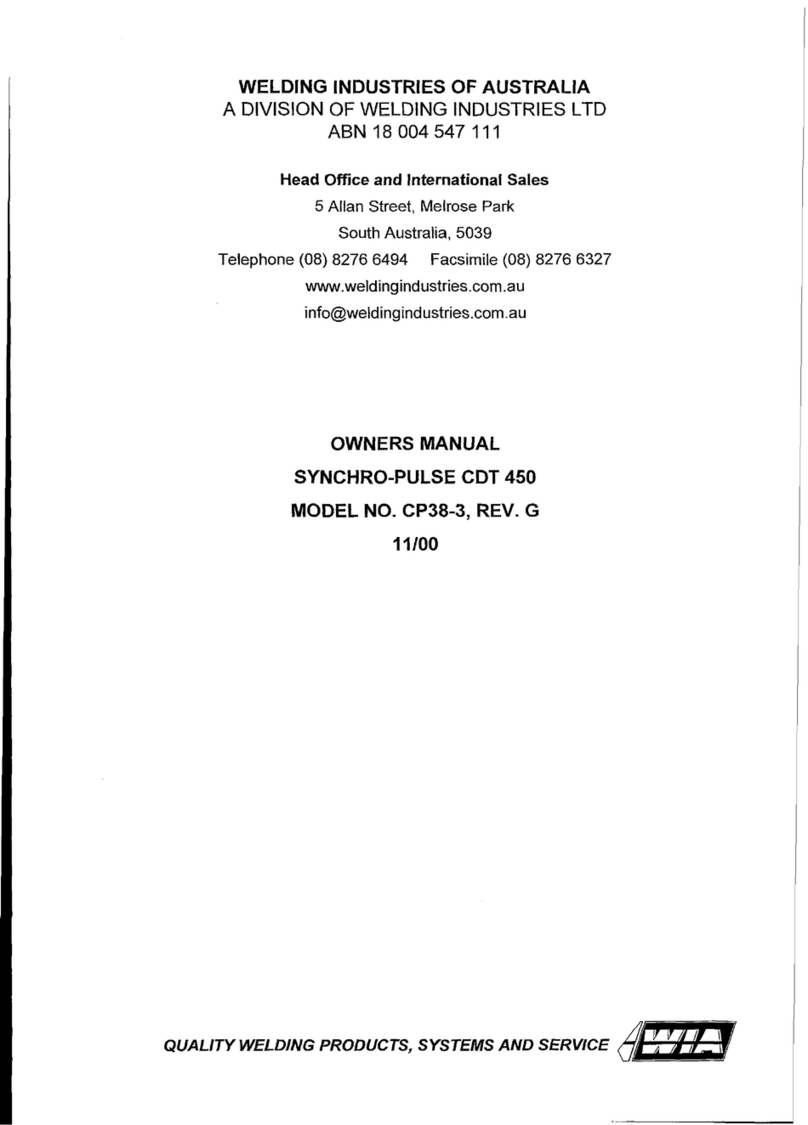
WELDING INDUSTRIES
WELDING INDUSTRIES Synchro-Pulse CDT 450 CP38-3 owner's manual

Lincoln Electric
Lincoln Electric EuropurePLUS 5500 LS Care and maintenance

CIGWELD
CIGWELD Transmig 130 Twin instruction manual
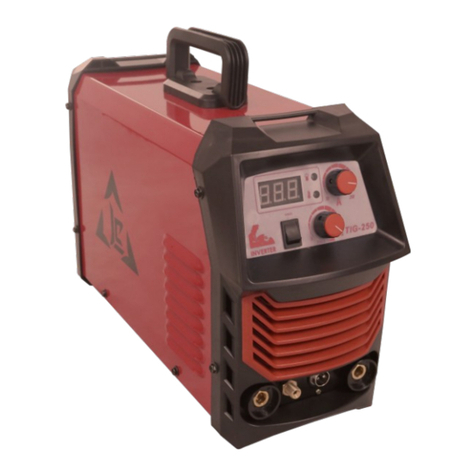
WilTec
WilTec TIG180 Operation manual
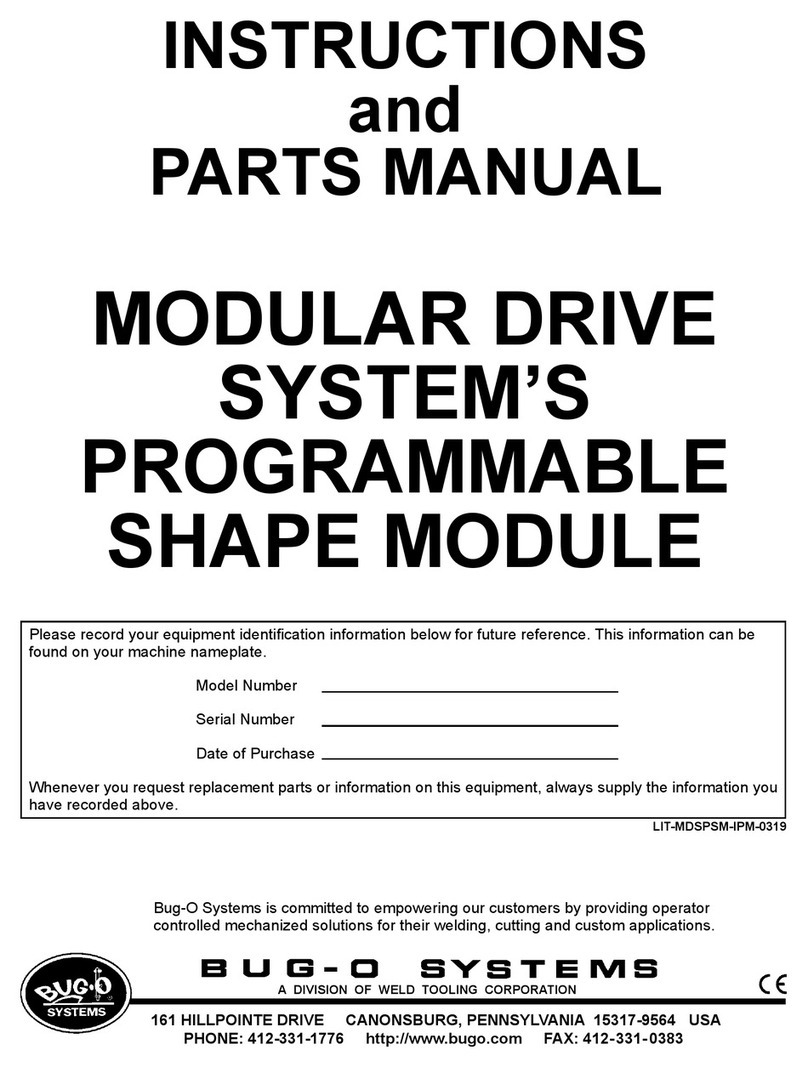
Bug-O Systems
Bug-O Systems MDS Series Instructions and parts manual
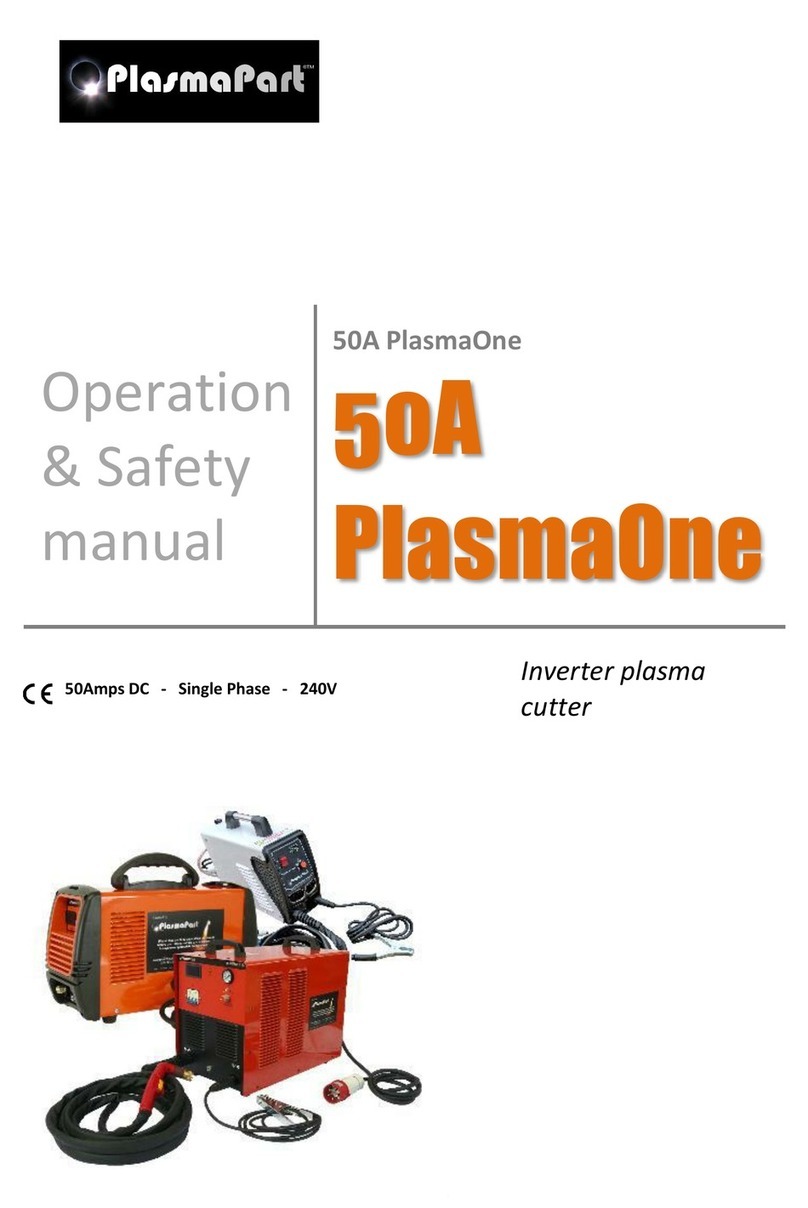
PlasmaPart
PlasmaPart PlasmaOne 50A Operation & safety manual
